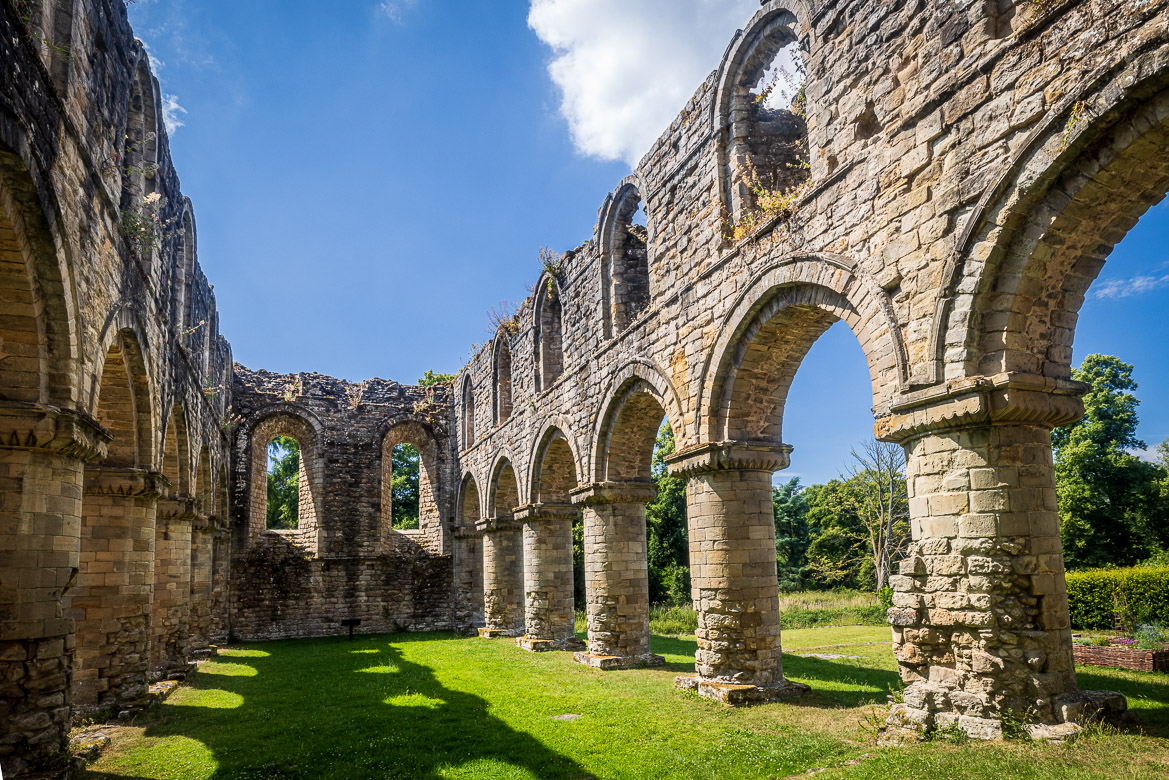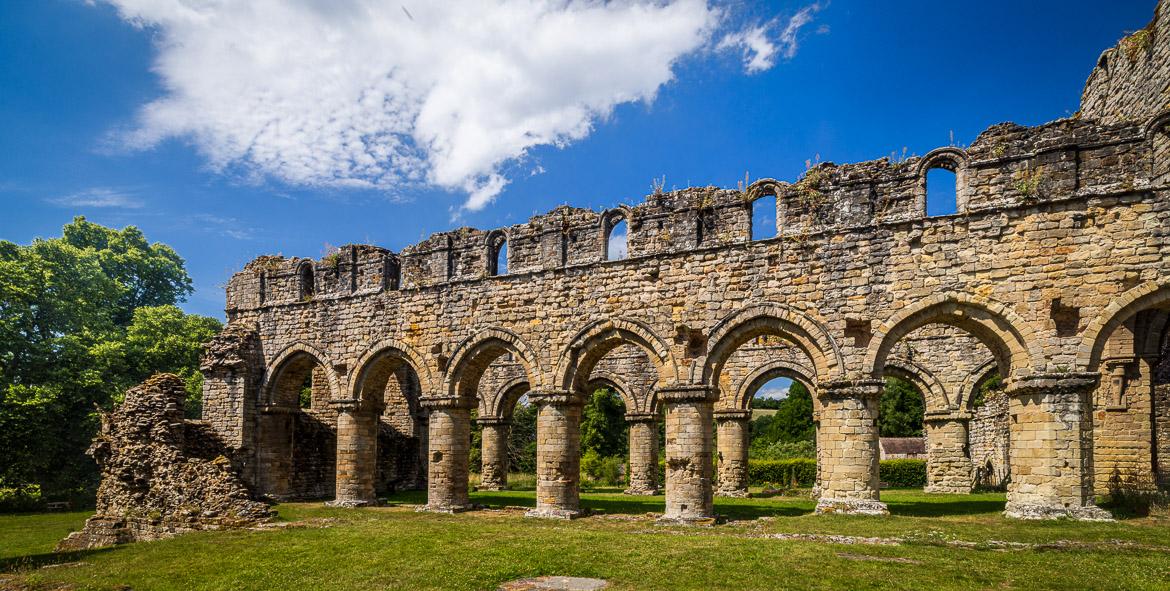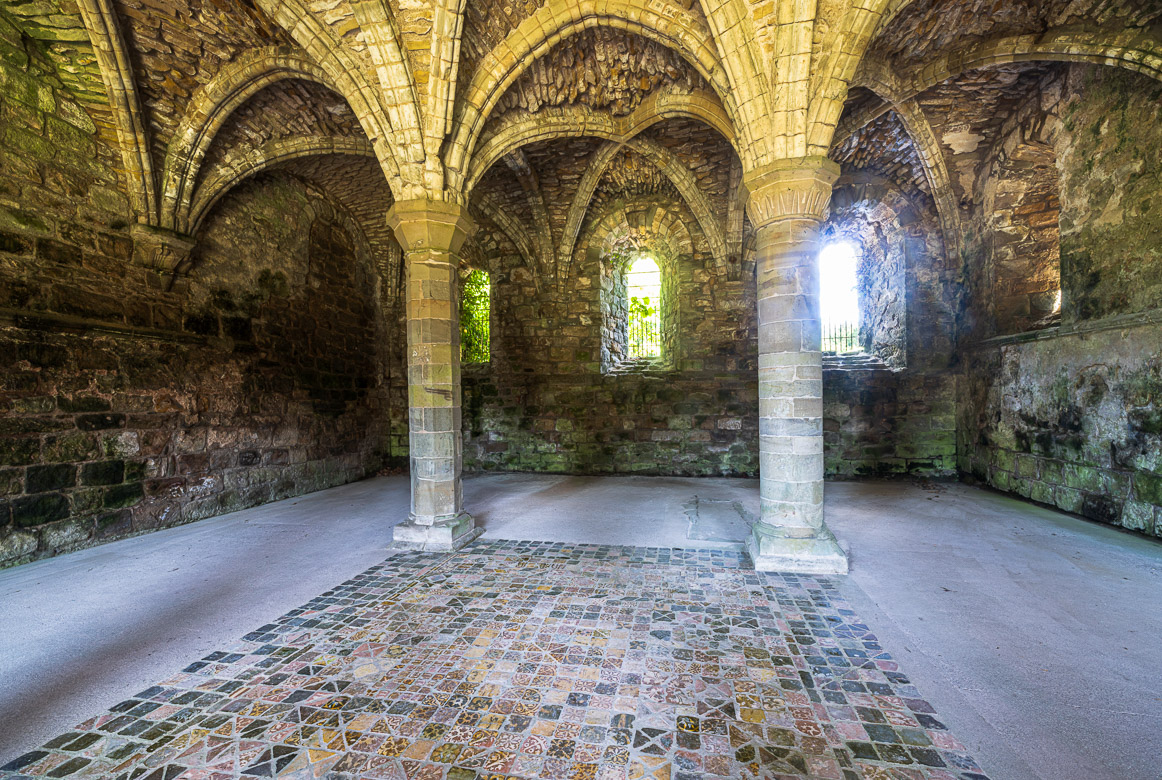
Buildwas Abbey is located in Shropshire along the river Severn, only a few miles from Wenlock Priory, described in my previous post. River Severn is the longest and largest river in England.
Buildwas Abbey was a Cistercian house founded in 1135. It was originally quite poor, but several estates were granted to the abbey in the late 12th C. Because of its increased wealth, the library grew and consisted of no less than 57 books (which was a considerable amount long before the printing press was developed). The abbey itself was constructed in the later part of the 12th C by local sandstone. The design is quite simple with the piers of the aisles being simple cylinders.
In the 13th C the wealth increased, and the abbey could compete with the large aristocratic families in Shropshire. Buildwas was run like a local fiefdom and sometimes attacked by several enemies. The Earl of Derby , Robert de Ferrers, approached Buildwas Abbey with an armed force and extorted £67 from it in 1264.

In 1342 the abbot was murdered , possibly by one of the monks, Thomas of Tonge. He was imprisoned but succeeded to escape. Different factions of monks wanted different abbots to be elected and in the contested elections the wealth of the monastery was squandered and Buildwas acquired a debt of £ 100.
Soon thereafter the Black Death arrived in Shropshire (1349) and the chapter at Buildwas was reduced to maybe 4 monks in 1380. And the Black Death was hardly over, when the abbey was attacked by a marauding force from Powys in central Wales. Both the abbot and his monks were imprisoned in Powys.
Thomas Crowell’s commissioners found twelve monks still living in the abbey in 1535, and the “moral standards of four of them were judged unsatisfactory”. A year later the abbey was dissolved when Henry VIII turned away from the catholic faith.

